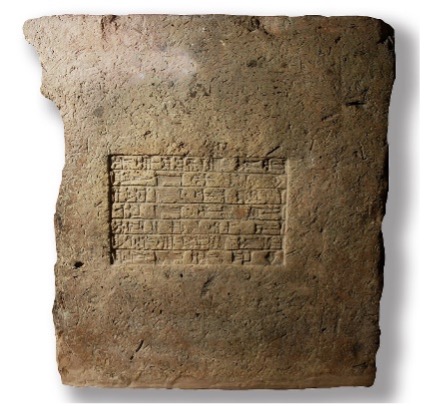
Decoding Earth's Magnetic Secrets explores ancient mysteries using Byzantine bricks and Mesopotamian ceramics

In a quest to unravel the enigmas hidden within the Earth's magnetic field, researchers have delved into the secrets held within ancient Byzantine tiles and bricks and Mesopotamian ceramics. These artifacts, once mere construction elements, now offer invaluable clues to understanding the historical fluctuations of our planet's magnetic field.
During the 1980s and 90s, Professor Ioannis Liritzis and his team pioneered an innovative approach to the archaeometric field called archaeomagnetism. By examining ceramic building materials from Byzantine churches which had an inscription of their construction time, thus the ceramic fabric time was known to the year, they discovered a unique method to date ancient structures and artifacts accurately, based on the geomagnetic intensity changes (Aitken et al., 1989; Liritzis 1989; Liritzis & Kovacheva, 1992).
These materials, used in constructing Greek Orthodox Byzantine churches and monasteries, most of which bear an inscription of the date of the establishment, across the Southeastern Mediterranean-Balkan-Anatolia-Circum Caucasian-Near and Middle East regions, held crucial accurate information (due to precise dating) about the Earth's magnetic field variations over the past 1,500 years.

Through meticulous analysis of iron oxide grains within these ceramics, researchers pieced together the story of Earth's magnetic field fluctuations. Previously, it was assumed that the field changed smoothly over time. However, these ancient artifacts revealed abrupt spikes and fluctuations, secured by the precise dating of the bricks and tiles, challenging earlier beliefs and pointing to rapid changes in the Earth's magnetic intensity during specific historical periods.
Researchers gleaned insights into the Earth's magnetic field behavior by collecting samples from known-age Greek churches dating from 215 AD to 1927 AD. This archaeomagnetic dating method proved more precise than traditional radiocarbon or luminescence dating, offering an accurate timeframe for objects lacking inscriptions or organic materials. For example, a noticeable drastic geomagnetic intensity change was observed for ca. 1300 AD.

Recent studies on Mesopotamian bricks and Levantine slags have further corroborated these findings. Data spanning approximately 2,000 years, from the 3rd to the 1st millennia BCE, highlighted drastic shifts in the Earth's magnetic field, especially within shorter timeframes, such as the 40 years from 604 to 562 BCE. (Ben-Yosef et al., 2009; Howland et al., 2023; Shaar et al., 2017, 2022).

The earlier research on Byzantine churches and the rest of global data sheds light on the Earth's magnetic past and hints at intriguing patterns. It unveils an oscillating nature in the geomagnetic variation across different latitudinal zones and suggests sharp changes occurring in some decades to 200-300-year intervals. Additionally, peculiar phenomena like the so-called Levantine Iron Age Geomagnetic Anomaly between ca 1000 to ca 500 BCE have been detected, similar to other regions as distant as Greece, China, and the Azores. This is encouraging since it reconfirms earlier investigations that had obtained this change, which rather implies a Global Geomagnetic Anomaly; yet much more work is expected to decipher drifting rates of such anomalies due to the non-dipole magnetic fields, and this is a wishful plea (Liritzis & Lagios 1993; Xanthakis & Liritzis 1991).
Professor Liritzis emphasizes the importance of these findings, noting the importance of accurate dating of ancient structures and the contribution to a better understanding of Earth's dynamo. He stresses the need for continued research, urging more data collection from securely dated artifacts to accurately decipher the geomagnetic field's complexities.
The revelations brought about by these ancient artifacts offer a window into Earth's magnetic past, hinting at the intricate dance of forces shaping our planet's history. As researchers continue to unlock the mysteries buried within Byzantine bricks and Mesopotamian ceramics, our understanding of Earth's magnetic dynamics grows richer, providing invaluable insights into our planet's story.
***
References
Aitken, M.J., Allsop, A.L., Bussell, G.D., Liritzis, Y. and Winter, M.B., (1989) Geomagnetic intensity meas-urements using bricks from Greek churches of first and second millennia AD. Archaeometry, 31, 1, 77-87.
Ben-Yosef, E et al., (2009) Geomagnetic intensity spike recorded in high resolution slag deposit in South-ern Jordan. Earth Planet Sci. Lett. 287, 529–539.
Howland, M.D, Lisa Tauxe, et al., (2023) Exploring geomagnetic variations in ancient Mesopotamia: Ar-chaeomagnetic study of inscribed bricks from the 3rd–1st millennia BCE, Proceedings of the National Academy of Sciences. DOI: 10.1073/pnas.2313361120.
Liritzis I. Lagios E. (1993) A global archaeomagnetic data bank. EOS, 74, 27, 303, 306
Liritzis Y., (1989) Greek archaeomagnetic intensities; Some aspects of reliability and geophysical implications. Earth, Moon and Planets, 47, 1-13.
Liritzis Y. and Kovacheva M. (1992). Evidence for sharp changes in the archaeomagnetic intensity variation during the last 2000 years. Physics of the Earth and Planetary Interiors 70, 85-89.
Shaar, R et al., (2022) Archaeomagnetism in the Levant and Mesopotamia reveals the largest changes in the geomagnetic field. J. Geophys. Res. Solid. Earth 127, e2022JB024962.
Shaar, R., Tauxe, L., Goguitchaichvili, A., Devidze, M., Licheli, V (2017) Further evidence of the Levantine Iron Age geomagnetic anomaly from Georgian pottery. Geophys. Res. Lett. 44, 2229–2236.
Xanthakis J and Liritzis I (1991) Geomagnetic field variation as inferred from archaeomagnetism in Greece and palaeomagnetism in British lake sediments since 7000 BC. Monograph, Academy of Athens Publica-tion, No 53, Athens, Greece.
